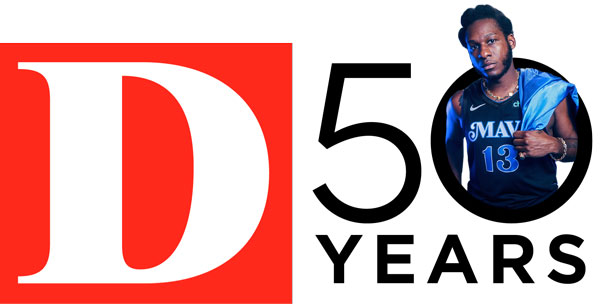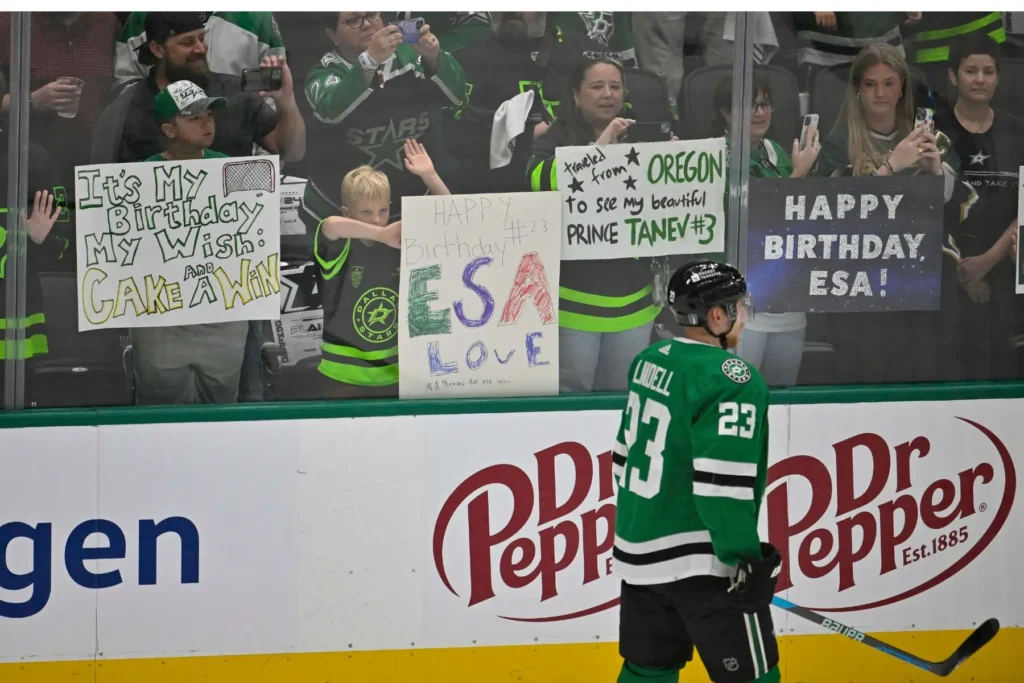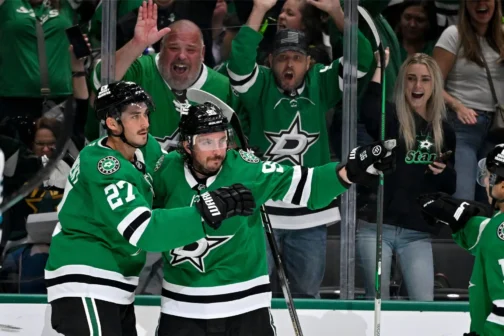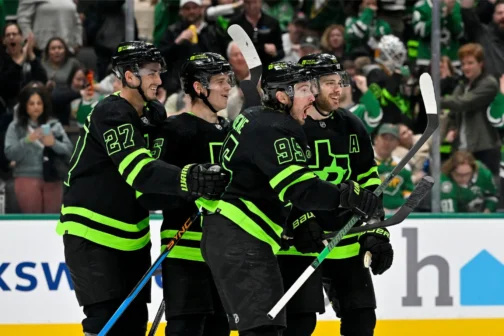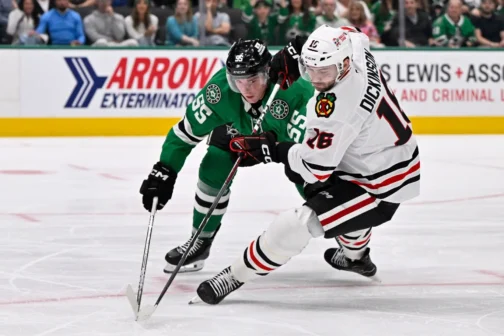Plus-minus is the most polarizing statistic in hockey.
In fact, by opening this column with those words, I’ve already drawn battle lines. Hockey snobs are either going to love this or hate it.
It’s also the best statistic to quantify what Esa Lindell has meant to the Stars, which is fitting when you take a deeper look at the now 30-year-old defender as he enters his 10th full season in Dallas. No matter what you think of his game, or how unremarkable it can seem, Lindell has effectively gotten the job done, particularly in his own zone.
First, though, we need to better understand why plus-minus is so controversial.
It’s a pretty simple stat that has been tracked by the NHL since the 1960s. If a player is on the ice when his team scores an even-strength or shorthanded goalie, he gets a plus. If he is on the ice when the opposing team scores in those fashions, he gets a minus.
The application is where things get tricky. Good teams naturally have players with a higher plus-minus, while the statistic also tends to reward defensively minded players.
“It’s a tool, and it’s not a bad thing to have, but plus-minus gets overly used by some people and underused by others,” one NHL Eastern Conference executive told me this week. “I don’t think anyone really knows how to use it properly. If you like new-age analytics, you tend to sneer at it. But really we’d never have those newer stats without plus-minus in first place.”
Here’s where Lindell comes in. In his nine full NHL seasons, the Finn has never had a negative plus-minus campaign. For his career he’s a plus-104, third-best in franchise history behind Jere Lehtinen (plus-176) and Mike Modano (plus-108). The only other Stars with plus-minus marks above 100 have their number retired (Sergei Zubov, plus-103) or will soon be inducted into the franchise’s Hall of Fame (Brendan Morrow, plus-102). In fact, since Lindell entered the league full-time, he’s right behind Norris Trophy winners Cale Makar (plus-108) and Adam Fox (plus-108) when it comes to plus-minus.
Whether it’s coincidence or causation, Lindell has been on the ice for much more good than bad over the past decade.
Lindell is at his best when he’s limiting and suppressing other teams’ chances. He does a good job preventing opponents from getting to the front of the net, and he’s underrated when it comes to tying up sticks when battling for rebounds. Lindell has also become a better decision maker the past couple of seasons, being less aggressive when it comes to physicality but making up for it with better play-reading and skating.
He also has been handsomely paid, making $5.8 million per season. This is where the Lindell discourse really ramps up.
It’s important to remember that Lindell effectively earned his contract because of his ability to play with John Klingberg, forming a lefty-righty pairing on the Stars’ top pair that could be used in most situations. As Klingberg’s career declined, and after he left in free agency, Lindell became a mismatched piece the Stars have struggled to maximize. This isn’t all on Lindell. The ideal Klingberg replacement, Nils Lundkvist, has struggled to the point of being unusable by the coaching staff in the playoffs. There have been other fits in the defensive zone and on the penalty kill (Jani Hakanpaa, for example), but a pairing relying on Lindell as the primary puck mover isn’t as effective.
Lindell has paired well with Miro Heiskanen, but that always leaves something to be desired because Heiskanen is still required to play on his off-hand. Heiskanen also creates less offense playing with Lindell because the pair takes on more of a shutdown role, by default.
The challenge this season is finding a way to make the symbiotic relationship between the Stars and Lindell closer to the mutualism it once was. And if they can’t, the Stars could have one of the biggest trade chips available to make a drastic in-season move for the future.
To make it work with the Stars, Lindell must find a fit with Matt Dumba or hope Lundkvist finally figures out his game in Pete DeBoer’s system. Lindell and Dumba could pair particularly well together, with Lindell affording the more aggressive and physical Dumba having a bit of a safety net.
It wouldn’t be a great puck-moving tandem, but it would be adequate, especially if Heiskanen and Thomas Harley get a chance to build together on the top pair, albeit with one playing on his off-hand.
Otherwise, the Stars could go with the more shocking and ballsy route of trading Lindell during the season to address their immediate and long-term needs. Although the list of NHL teams lining up to trade for Lindell isn’t as long as it once was, he still fits the profile of a player—veteran defender, penalty killer—who will get higher market value than expected.To be clear, it’s not a move Jim Nill wants to make, and Lindell holds the cards thanks to a no-movement clause this season. But if the best move for both is to part ways, it could be a beneficial trade for both the team and the player.
A win-win hockey trade—hard to think of something more old school than that. Except, of course, for plus-minus.
Author

